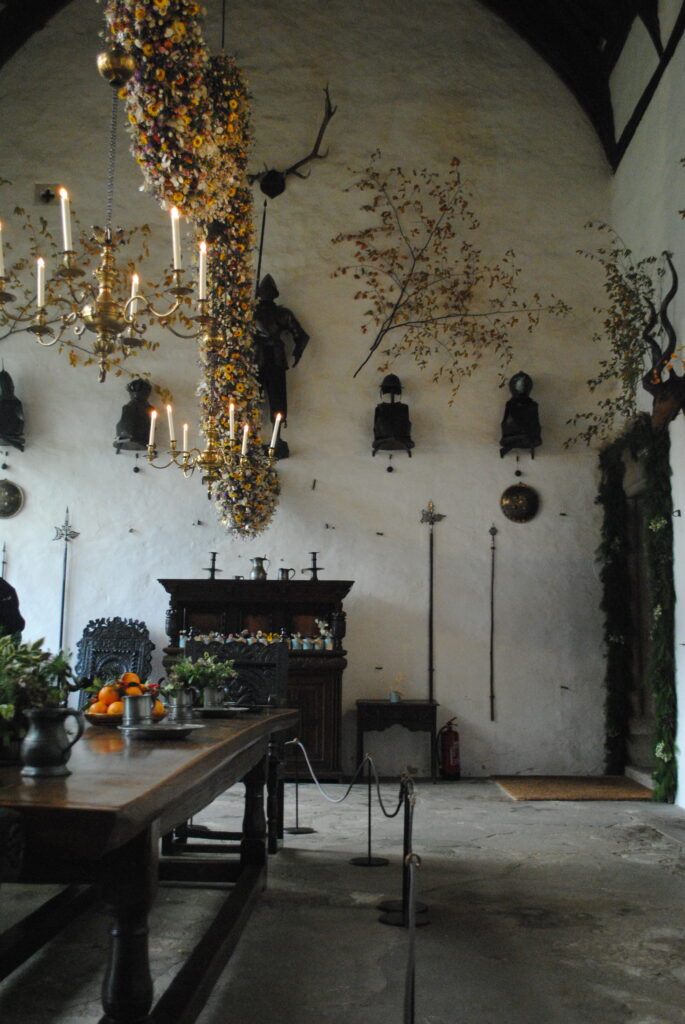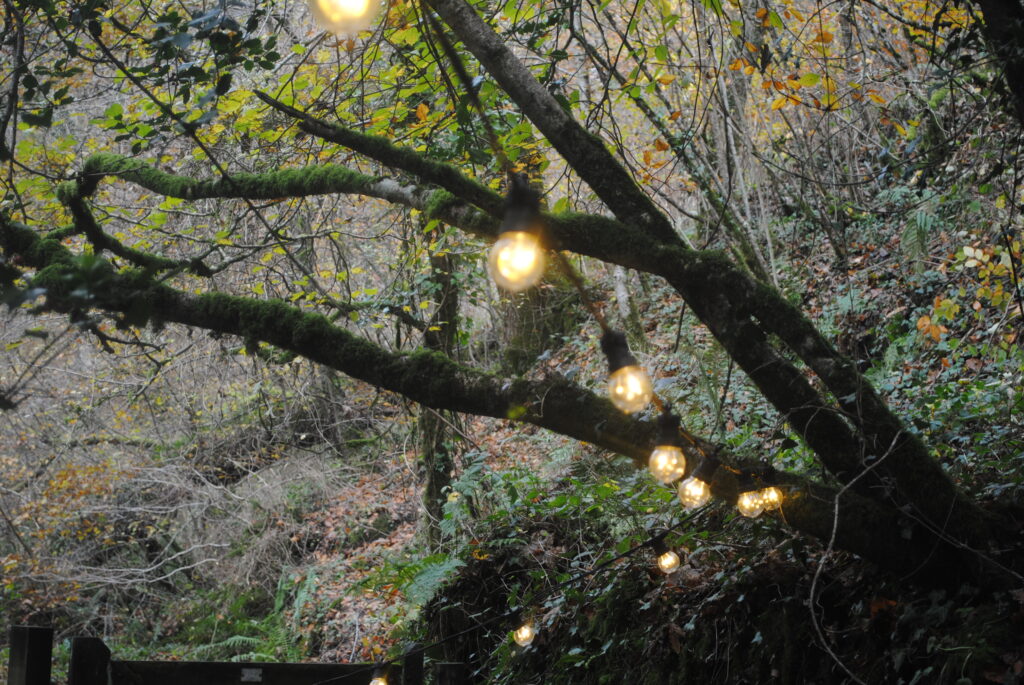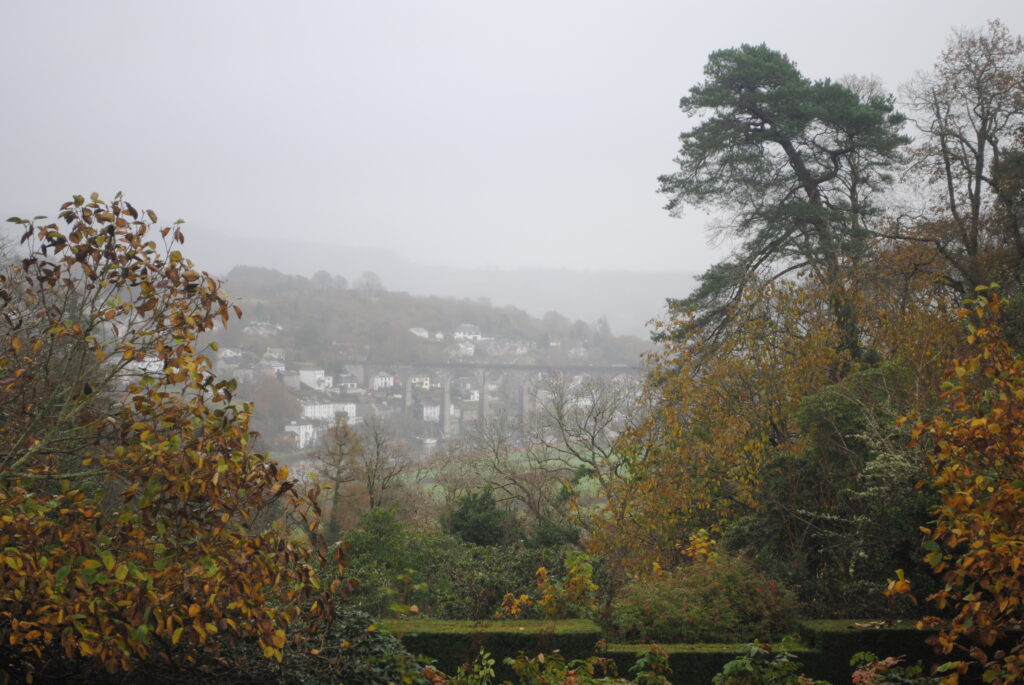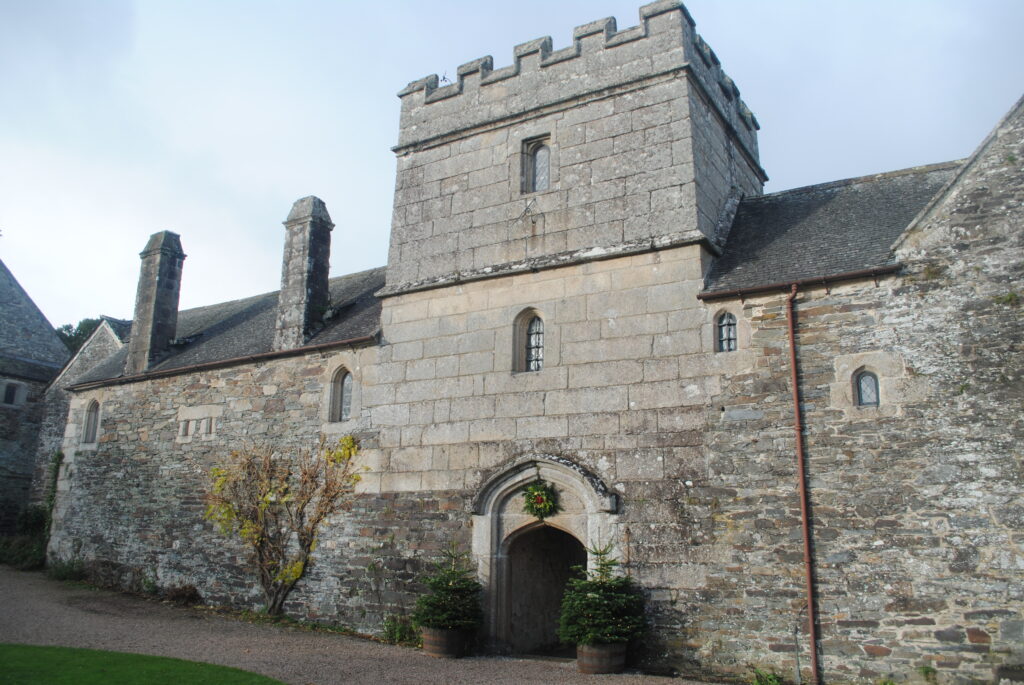
This November, I visited the Tudor house of Cotehele which is a national trust property perched on a hill above the River Tamer on the border between Devon and Cornwall. This has become one of my favourite places I’ve visited. One of the reasons for this was the impressive main hall. In addition to this, the property has extensive gardens and forest which at that time were beautiful colours of the autumn. The walk to the mill was decorated with a wooden reindeer trail and a string of Christmas lights.
Cotehele’s Christmas garland is a one of a kind sight on display in the main hall of the property. When you step in, the room transports you into another, more mystical world. The atmosphere is created by the dried branches, armour and deer antlers decorating the wall. The garland itself is 60 ft long and consists of around 30,000 flowers. Though it is made of flowers that are reminiscent of a summer meadow, it is made each year for Christmas. To add to the display there is also a lovely touch of evergreen that matches more to the holiday spirit. However, this trip made me want to explore more into the decorations we make for Christmas and where they originally come from.
A popular Christmas trivia fact is that the Christmas tree was first popularised by Queen Victoria’s husband Prince Albert in 1840. A lesser known fact is that it was actually the German wife of George III, Queen Charlotte (widely known for the recent Bridgeton series: Queen Charlotte) who set up the first known tree at Queen’s Lodge, Windsor. Though let’s look back a little further into Britain’s history.
Evergreens have long been used in association with the winter holiday. Druids believed that evergreens represented everlasting life as unlike the deciduous trees, their leaves remain green throughout the year. Similar beliefs can be found in other ancient cultures such as Egyptian, Roman and Vikings. Though early Christians were resistant to pagan customs, the tradition of decorating with evergreens persisted in the Middle Ages. Some Church records that are still around today from the late Middle Ages have a record of the purchase of holly and ivy for the winter.
Many of our Christmas traditions originate from the ancient Roman pagan festival of Saturnalia honouring the god Saturn. This was celebrated near the winter solstice which this year is Friday, 22nd December 2023. This included the evergreens, candles, feasting, and gift-giving. However, there is another holiday tradition that was introduced later on. Christmas Carols!

By oral tradition, Christmas Carols can tell us a lot about Christmas celebrations throughout the years. Hymns have gone in and out of fashion but made a considerable resurgence in Victorian times. Traditionally the carols follow the medieval chord pattern which causes their unique musical sound. The song “The Holly and the Ivy” can be traced back directly to the Middle Ages. The line “Of all the trees that are in the wood/ the holly bears the crown” can be linked to the pagan figure of the Holly King.
To conclude, I thoroughly enjoyed my visit to Cotehele. The hall was magically decorated and the walks in the grounds were a highlight due to the beautiful shades of autumn. The team there has done an amazing job and it’ll be interesting to go again during the different seasons of the year.




Links to learn more…
https://www.english-heritage.org.uk/learn/histories/christmas-greenery-history/
https://edmontonjournal.com/life/homes/gardening/historic-backstory-on-christmas-evergreens